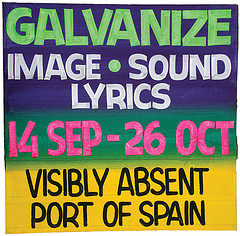Sunday, April 23, 2006
Who comes walking in the dark night time?
Whose boot of steel tramps down the slender grass?
"Unprecedented", the news reports are calling the assassination of Satyadeow Sawh. It's true that this horrible event--the cold-blooded murder of a sitting Cabinet minister and three other people by a gang of men armed with assault rifles--raises Guyana's ongoing crisis to a more desperate pitch. But the history of Guyana over the last fifty or sixty years is a sickeningly sequence of "precedents": from the Enmore Martyrs in 1948 to the horrors of the immediate pre-independence years in the 1960s to the murders of Bernard Darke, Vincent Teekah, Ohene Koama, Edward Dublin, Walter Rodney, and others in the late 70s and early 80s; to the violence after the 1997 and 2001 elections, to the Buxton "uprising" and the "death squad" which the former interior minister Ronald Gajraj is alleged to have run; and, just in the last few months, the murders of Ronald Waddell, Gazz Sheermohamed, and the eight people killed in Eccles and Agricola on the southern outskirts of Georgetown in one night at the end of February.
I've spent much of the last year thinking about and trying to understand Guyana. I've travelled about the country, talked to and interviewed people, read hundreds of thousands of words, and I've been trying to come to terms with my own experiences there the best way I know: writing them down, tentatively, anxiously. Again and again, Guyana's actual unfolding history has halted me. Maybe there is a degree of despair I don't have the nerve to engage. Maybe this heart of darkness is too dark. Maybe there are bad dreams I don't want to have.
It is the man of death, my love, the strange invader
watching you sleep and aiming at your dream.
Whose boot of steel tramps down the slender grass?
"Unprecedented", the news reports are calling the assassination of Satyadeow Sawh. It's true that this horrible event--the cold-blooded murder of a sitting Cabinet minister and three other people by a gang of men armed with assault rifles--raises Guyana's ongoing crisis to a more desperate pitch. But the history of Guyana over the last fifty or sixty years is a sickeningly sequence of "precedents": from the Enmore Martyrs in 1948 to the horrors of the immediate pre-independence years in the 1960s to the murders of Bernard Darke, Vincent Teekah, Ohene Koama, Edward Dublin, Walter Rodney, and others in the late 70s and early 80s; to the violence after the 1997 and 2001 elections, to the Buxton "uprising" and the "death squad" which the former interior minister Ronald Gajraj is alleged to have run; and, just in the last few months, the murders of Ronald Waddell, Gazz Sheermohamed, and the eight people killed in Eccles and Agricola on the southern outskirts of Georgetown in one night at the end of February.
I've spent much of the last year thinking about and trying to understand Guyana. I've travelled about the country, talked to and interviewed people, read hundreds of thousands of words, and I've been trying to come to terms with my own experiences there the best way I know: writing them down, tentatively, anxiously. Again and again, Guyana's actual unfolding history has halted me. Maybe there is a degree of despair I don't have the nerve to engage. Maybe this heart of darkness is too dark. Maybe there are bad dreams I don't want to have.
It is the man of death, my love, the strange invader
watching you sleep and aiming at your dream.
Subscribe to:
Post Comments (Atom)









2 comments:
One of my favourite poems. Had to learn it for CXC - can cite it to this day.
I know it sounds vaugue but the way you write about Guyana, the way you feel it, and transmit that to us your readers, will always overcome any bad dreams you encounter. I think you have a place and engagement to write from that may not arrive again soon for others. Perhaps a bit of geographic distance, slight, as it should be, is what is needed in one who writes about the dark.
Post a Comment